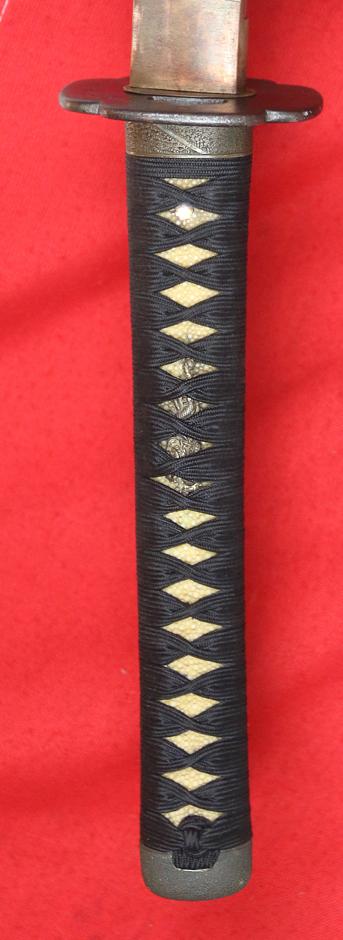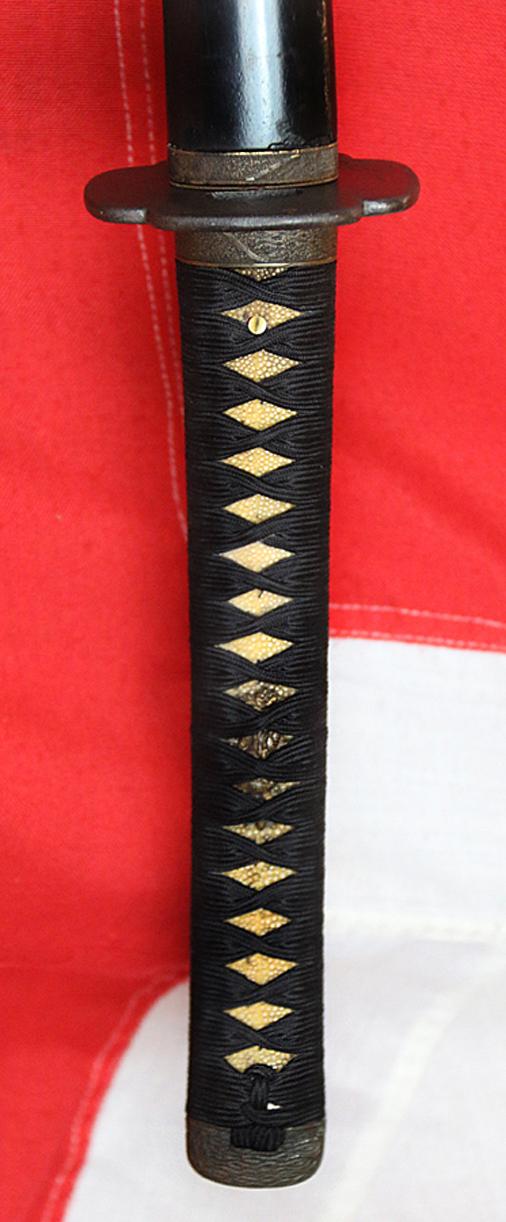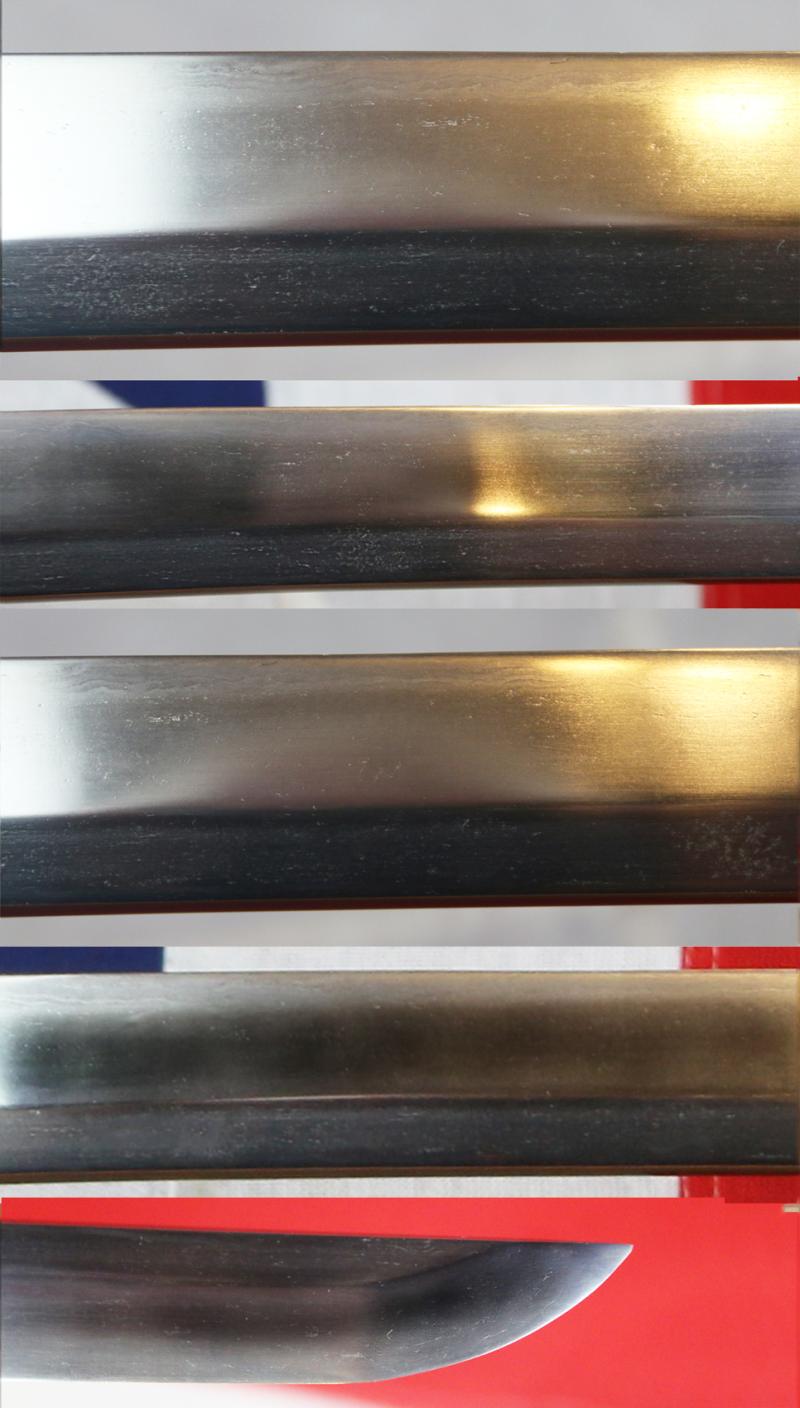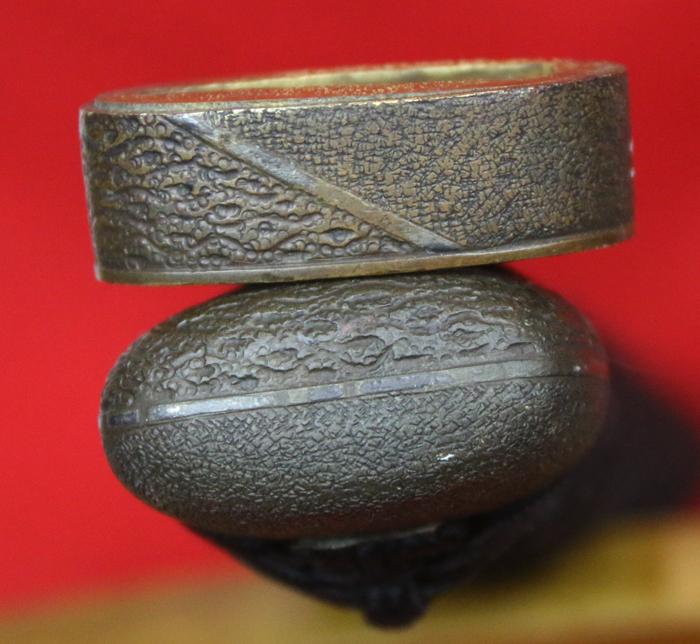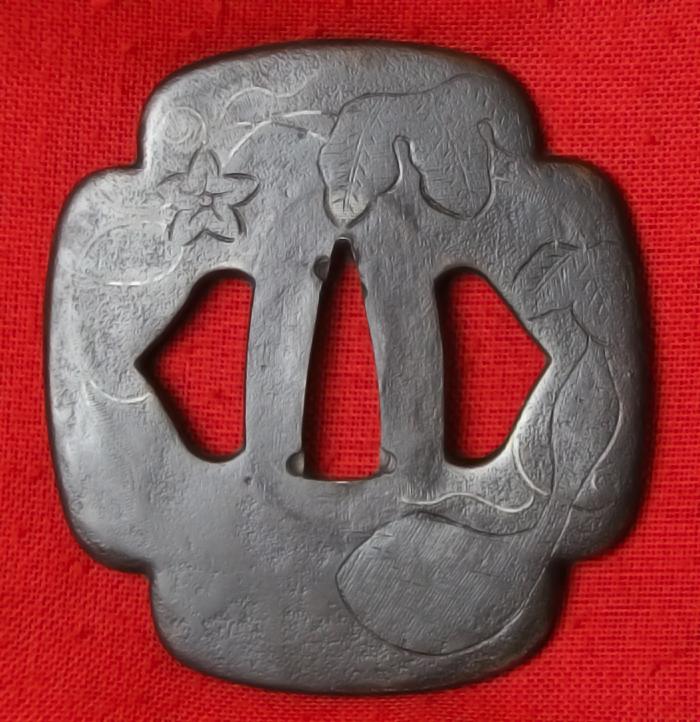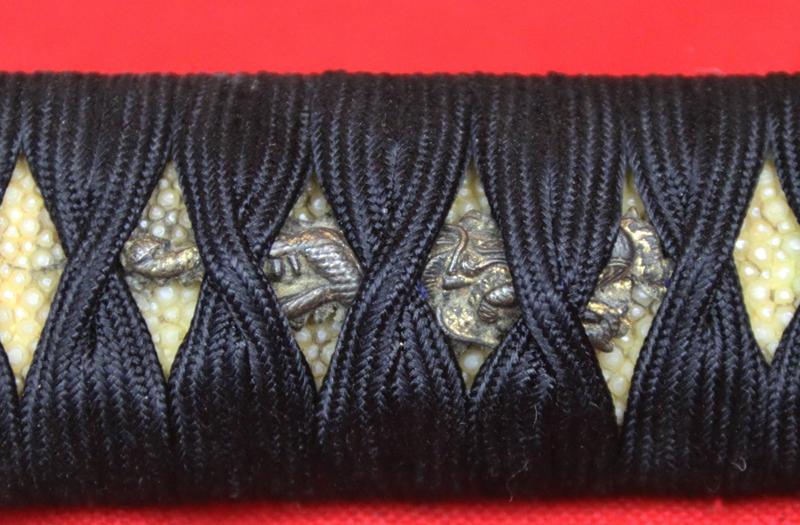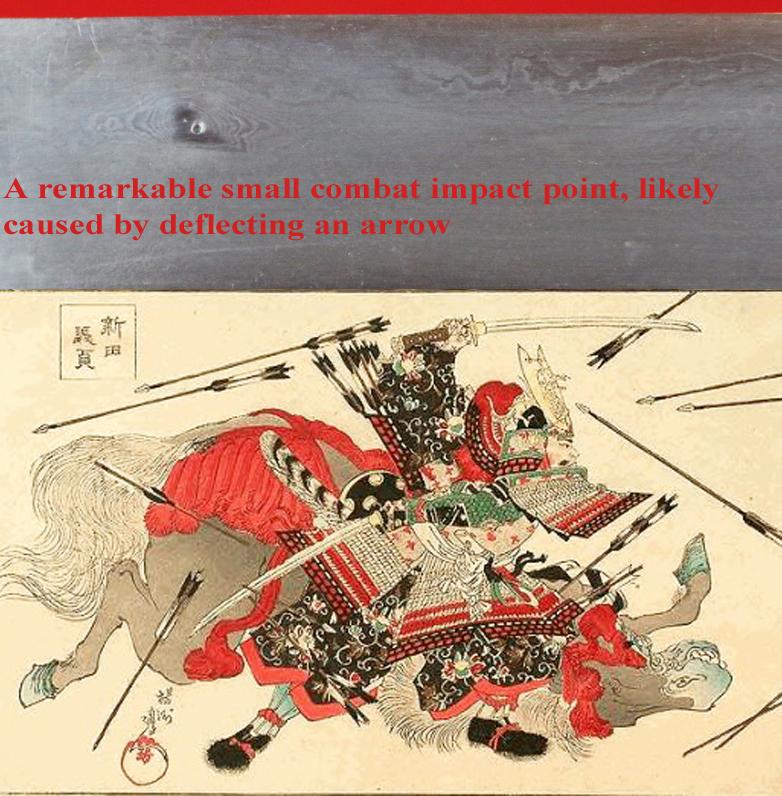A Powerful Long & Formidable Samurai Antique Shinto Period Katana Signed Blade, of Shumada Kami Taira Yoshisuka, With an Incredible Yadome no Jutsu, Arrow Defensive Blocking Mark & Matsushiro Sinano School Koshirae
All original Edo period mounts and black lacquer saya, and a very good mokko shaped tsuba engraved with leaves and flowers with lines of silver inlay. Menuki of dragons. Fully matching suite of mounts to the tsuka and saya, Matsushiro Sinano school, Signed blade, Shumada Kami Taira Yoshisuka.
The hada is very nicely visible in the excellent polish and around one inch from the habaki the obverse blade face has deflected a blow from an enemy arrow, and created a tiny circular impact point surrounded with incredible hada grain rippling. Please note that unique phenomena, in the photograph, where a the fast travelling projectile has been deflected by the blade from its samurai target and the instant pressure wave incurred in micro seconds has created a miniature tsunami of steel sent out from the impact point for just a few millimetres and created an oval misshaped hada grain all of its own, within the natural hada grain of the blade. A visual record of the samurai’s extraordinary skill and ability to intercept an arrow in mid flight, and something even a nihonto {samurai sword} specialist might only see once in a lifetime. Below the photograph of impact, we show, in the same photo, an antique Japanese woodblock print of the very same action being performed by a samurai, the ‘Yadome no Jutsu’ blocking himself from the impact of arrows, with his sword blade, while being consumed by a hail of enemy yadome {arrows} in flight, while his faithful steed is being impaled by the deadly hail.
This is an amazing thing to see, in that the arrow impact was remarkably deflected, and otherwise the arrow would without doubt have penetrated the body of its samurai, and likely it would have been a fatal wound. Impacts to blades such as this are much revered and honoured, and if possible not removed in later blade polishing.
There is a move in samurai sword combat that is designed to deflect an incoming arrow, which must have been incredibly difficult to execute. The technique is called 'yadome' or 'yadome no jutsu' - the art of cutting or blocking arrows. There are stories of it in Sengoku Japan (and older), it must have required very impressive skill. In the Heike Monogatari (Tale of the Heike), one of the most famous examples of arrow cutting is described:
"Then Gochi-in Tajima, throwing away the sheath of his long naginata, strode forth alone on to the bridge, whereupon the Heike straightaway shot at him fast and furious. Tajima, not at all perturbed, ducking to avoid the higher ones and leaping up over those that flew low, cut through those that flew straight with his whirring naginata, so that even the enemy looked on in admiration. Thus it was that he was dubbed Tajima the arrow-cutter. Some katana can be light and finely balanced to reflect the stature of the samurai who wielded it in combat, others, such as this one, was most certainly for a mighty samurai, either to use on foot in full armour, or in armour on horseback. This is the stature of a sword that could be used against a foe, similarly adorned in full armour, and its power would easily be perfectly suitable against armour in the melee of battle.
Samurai have been describes as "the most strictly trained human instruments of war to have existed." They were expected to be proficient in the martial arts of aikido and kendo as well as swordsmanship and archery---the traditional methods of samurai warfare---which were viewed not so much as skills but as art forms that flowed from natural forces that harmonized with nature.
An individual didn't become a full-fledged samurai until he wandered around the countryside as begging pilgrim for a couple of years to learn humility. When this was completed they achieved samurai status and receives a salary from his daimyo paid from taxes (usually rice) raised from the local populace. Swords in Japan have long been symbols of power and honour and seen as works of art. Often times swordsmiths were more famous than the people who used them. The rise in popularity of katana by samurai is believed to have been due to the changing nature of close-combat warfare. The quicker draw of the sword was well suited to combat where victory depended heavily on fast response times. The katana further facilitated this by being worn thrust through a belt-like sash (obi) with the sharpened edge facing up. Ideally, samurai could draw the sword and strike the enemy in a single motion. Previously, the curved tachi had been worn with the edge of the blade facing down and suspended from a belt.
As with all our items it comes complete with our certificate of authenticity. 28.25 inch long blade from the tsuba to tip.
Code: 23061
6995.00 GBP



